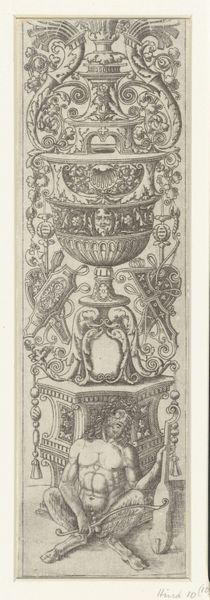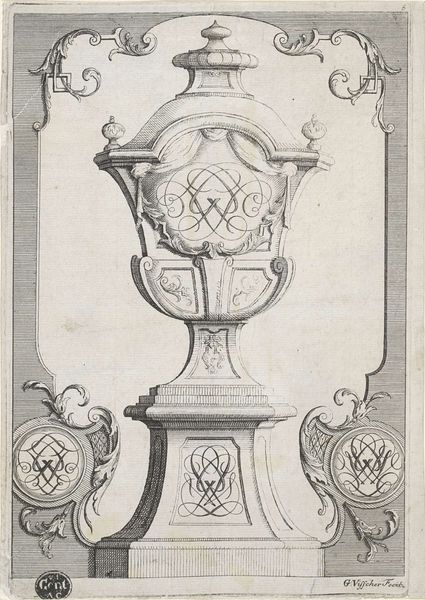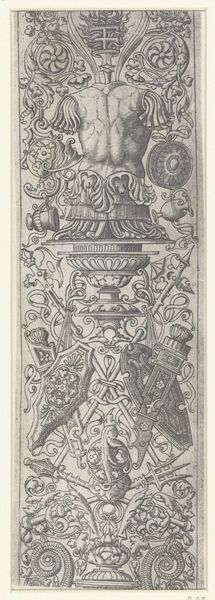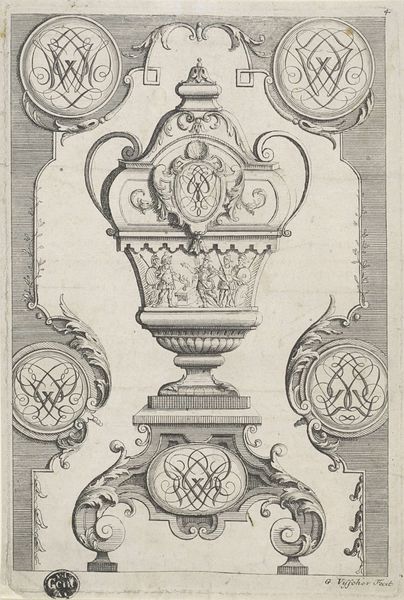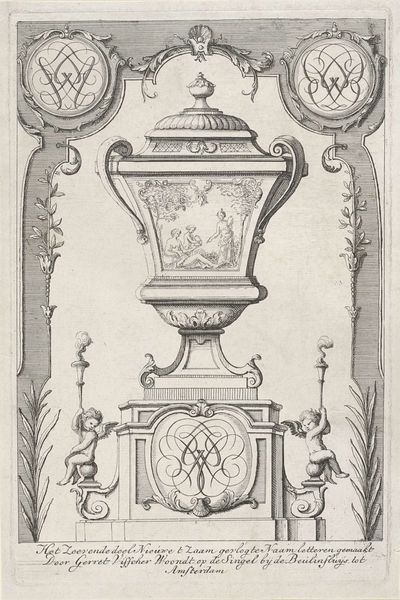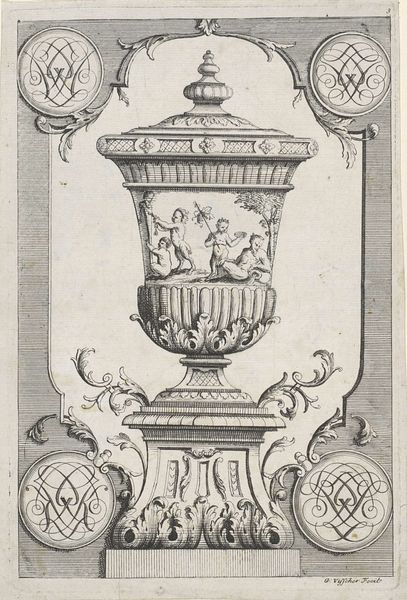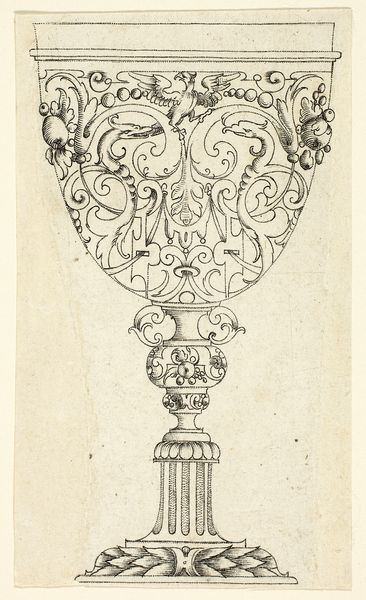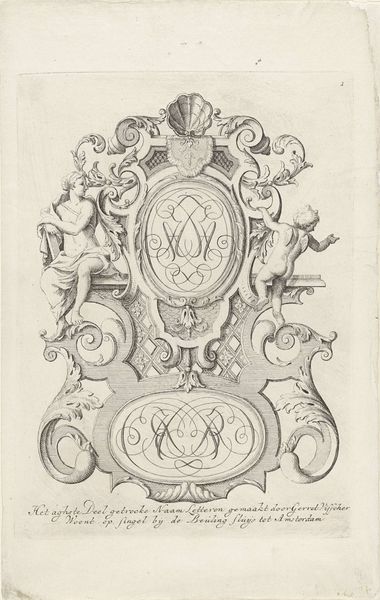
print, engraving
#
pen drawing
# print
#
pen illustration
#
pen sketch
#
old engraving style
#
fantasy-art
#
mannerism
#
figuration
#
ink line art
#
pen-ink sketch
#
line
#
pen work
#
engraving
Dimensions: height 106 mm, width 70 mm
Copyright: Rijks Museum: Open Domain
Curator: This fantastical design, titled "Kandelaber, midden onder staan twee saters rug aan rug," which translates to "Candelabra, in the middle stand two satyrs back to back," is attributed to Hans Sibmacher, and dates circa 1525-1594. The artwork presents a complex arrangement using engraving on what appears to be a print. Editor: My initial impression is that the intricate linework creates an overwhelming sense of density. There’s a strong decorative impulse at play, prioritizing ornament and almost fighting against any sense of functionality a candelabra would usually have. What do you make of all the detail? Curator: The abundance of symbolic elements is striking. We have satyrs, mythical creatures associated with revelry and the wild, flanking what appears to be a cartouche. Above them, are grotesque faces and hybrid beasts, creating a visual program loaded with classical and folkloric references. The symbols resonate with deeper truths and are culturally coded. Editor: I’m curious about the labour involved in creating this. Given the medium—engraving, likely on a copper plate—there would be a significant amount of skilled work involved. It raises questions about who was commissioning this kind of highly wrought ornamental design. Was it intended for an artisan to then translate into a physical object, perhaps in metalwork? Curator: Likely so. Ornamental prints like this one served as source material for artisans, jewelers, and other craftspeople. These prints enabled the spread of stylistic trends and iconographic programs throughout Europe. It shows that cultural values, like symbolism or class status, could disseminate using a mode of "mass production." Editor: The print’s existence speaks volumes about the networks of skilled labour supporting the production of luxury items during the period, all those expert engravers. We tend to think about the patrons or the named artists, but the process involves many, many hands. I would like to feel that material context as I ponder the candelabra. Curator: Yes, acknowledging the networks of labor helps us better understand the transmission of artistic styles, such as Mannerism, visible in the elongated forms and stylized compositions. Editor: Seeing it through that material lens highlights the practical function of these fantastical forms—serving the needs and desires of a wealthy elite, made by skilled and diligent craftsmen and artists. A somewhat useful form made from an intense, coordinated effort! Curator: Indeed. It reminds me how enduring and layered symbolism can be, and what power imagery possesses. Editor: And the work highlights the role of design as a conduit for wealth and taste. Thanks!
Comments
No comments
Be the first to comment and join the conversation on the ultimate creative platform.
